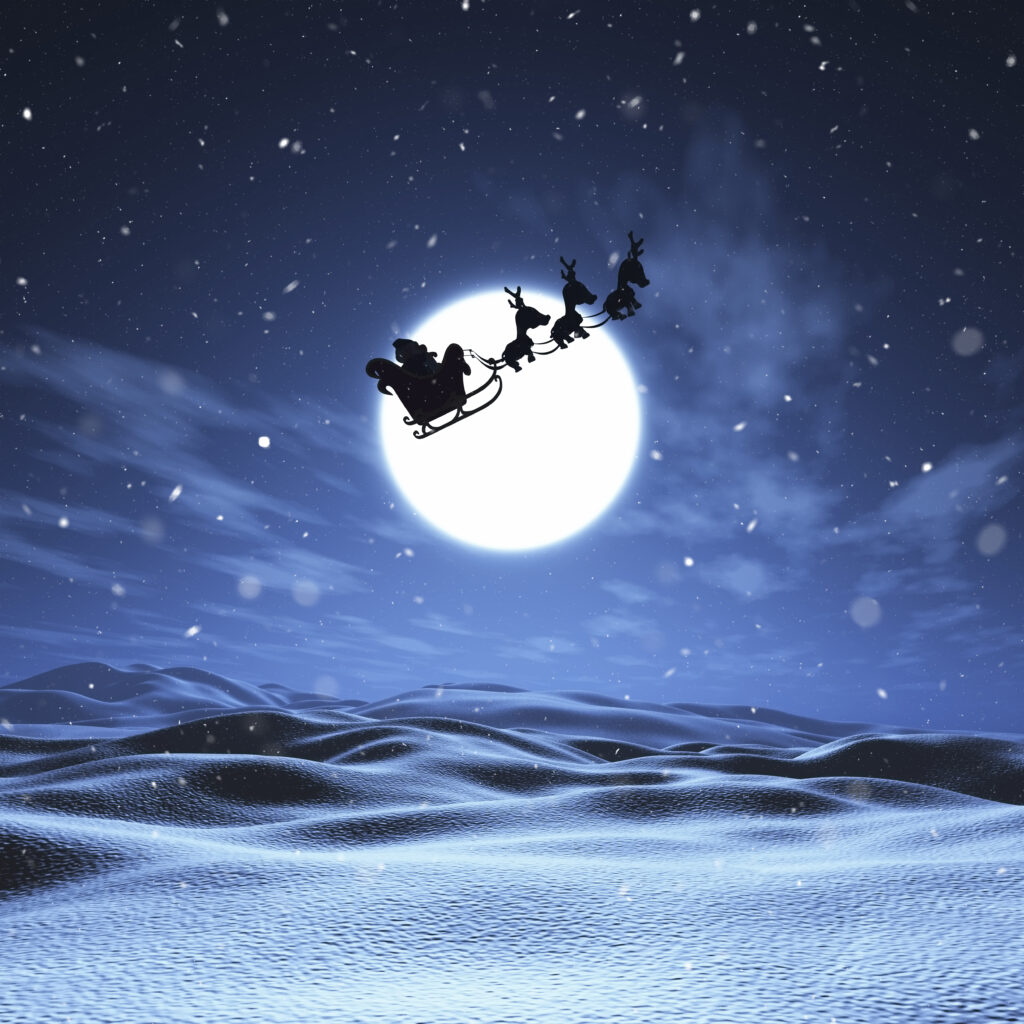Kind and not so kind, an old man or a young fellow, wearing a warm coat or barefoot — the world’s favorite holiday wizard takes many forms and names. If you’re curious to learn what people call the character we know as Ded Moroz in different parts of the world, read on.
Russian Santa Claus (Ded Moroz)
No surprises here — in Russia, the winter wizard is known as Ded Moroz, or officially Moroz Ivanovich. That’s how forest animals and people address him in Russian fairy tales.
He brings presents on New Year’s Eve and leaves them under the tree. How does he get into the house? Usually through the window, while everyone is asleep. In the morning, kids can spot his snowy footprints around the home.
Since 1998, Ded Moroz has had an official residence in Veliky Ustyug. Children all over the country dream of visiting him in person.
Where did his name come from? Before the revolution, Saint Nicholas brought gifts to children. But during Soviet times, religious figures were banned, and the Church’s saint was replaced with a fairy tale character.
USA, Canada, and English-speaking countries
Here, kids get visits from a jolly old man named Santa Claus — a name that comes from Saint Nicholas. Unlike Ded Moroz, Santa brings gifts on Christmas.
He sneaks in through the chimney and loves snacks. That’s why kids leave milk and cookies out for him before going to bed.
Santa rides a sleigh pulled by reindeer, while Ded Moroz travels in a Russian troika — a sleigh pulled by three horses, symbolizing the three months of winter.
By the way, Santa Claus lives at the North Pole, in Alaska.

Scandinavian countries — Finland, Sweden, Denmark, Iceland
In these countries, the name of the Christmas figure comes not from Christian saints, but from ancient pagan traditions and gods.
Take Joulupukki from Finland, for example. Before the 20th century, he didn’t look like a friendly old man at all. Joulupukk The character came from a pagan Celtic festival (we wrote about it in our article on the winter solstice). His name literally means “Christmas Goat,” and not that long ago, he was a scary creature used to frighten naughty children — legend says he’d drag them into his cave and eat them.
But as time passed, Western European traditions made their way into the far north, and the kind, magical grandfather figure replaced the scary goat. Still, he kept the name. That’s how Finland’s version of Santa Claus ended up being called Joulupukki.
In Sweden, Jultomten started out as a gnome — also rooted in old mythology. Over the years, though, he evolved into a figure much more like Santa Claus, complete with his red hat and jacket.
Denmark has not one but two Christmas characters — an elder and a younger one. They’re called Julenisse and Julemanden. Both bring gifts to children, but instead of placing them under the tree, they hide them around the house. So finding presents becomes a fun Christmas scavenger hunt for kids.
But Iceland might have the most unique tradition of all — thirteen magical gnome-like figures called the Yule Lads (Jólasveinar). They visit children one by one during the thirteen nights leading up to Christmas, each leaving small gifts behind.
Now, let’s head back to Western Europe.
Germany, Italy, France
Even though Santa Claus has deep religious roots, there’s still no single version of him across Christian Europe.
In Germany, for instance, there are two magical gift-givers. One is Saint Nikolaus, who brings presents on St. Nicholas Day in early December. The other is the New Year’s visitor, Weihnachtsmann, who resembles the Russian Ded Moroz or American Santa Claus. Lucky German kids — they get double the gifts in December!
In France and other French-speaking countries, there’s just one version of Father Christmas — he’s called Père Noël. He rides a donkey, so children leave treats for the animal in their old shoes or socks.
Italy’s , the local Santa is called Babbo Natale, and he’s got a partner — a kind witch named Befana. We’ve mentioned her in our article about Christmas symbols.
Interestingly, Babbo Natale looks and acts a lot like Santa Claus — he flies in a sleigh pulled by reindeer and is said to live in Lapland. It seems Italians fell in love with the American version of Santa and happily adopted it.


Unusual “Santa” Figures in Other Countries
Unlike in Western Europe, the image of the holiday gift-giver looks quite different in the East. In Greece , for example, their version of Santa Claus is based not on Saint Nicholas, but on Saint Basil. He was also known for his kindness and charity, and he brings gifts to children around New Year’s — just like Ded Moroz in Russia.
In Bulgaria , the local Santa is called Dyado Koleda. He looks more like the American Santa Claus and also brings presents on New Year’s, since January 1st is the feast of Saint Basil — just like in Greece. Belarus has its own version too — a winter spirit named Zyuzya. Unlike the jolly Santa types, Zyuzya is known for his serious, almost stern nature. He’s not afraid of the cold and even walks barefoot through snowy forests. Definitely the toughest of all the holiday wizards.
Of course, one article can’t cover all the magical figures children believe in during the holidays — but we’ve done our best to highlight some of the most fascinating ones.
And if you're curious to learn more about New Year’s traditions and symbols, don’t miss this article.







